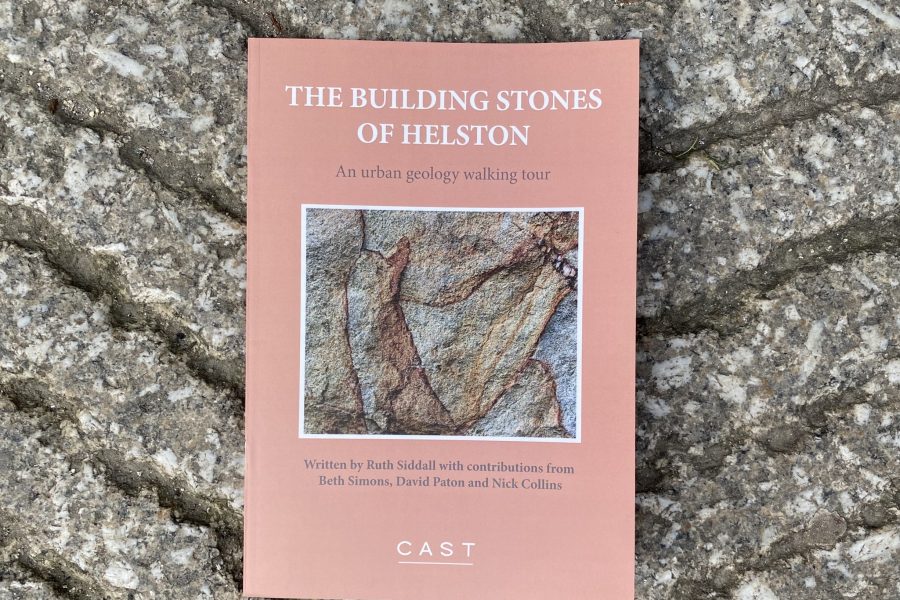This film by Yusof Abdul-Rahman is the outcome of a series of meetings and conversations initiated by CAST and by journalist Kate de Pury. Artist Richard Wentworth and historian Ivor Bowditch explore Cornwall’s china clay industry and how, to this day, it shapes the region’s landscape, culture and experience.
Kate de Pury writes:
The conversation between Richard Wentworth and Ivor Bowditch represents a meeting of two men of similar age, their lives led in different spheres, whose dialogue sparks new connections and insights. Wentworth, one of the UK’s most influential artists and sculptors, has always been fascinated by materials and by how things are made. Bowditch spent his working life in the china clay industry near St Austell, starting as a young man supervising the work of extraction in the pits and ending in a senior management role, a career of nearly fifty years that gives him an exceptional overview and understanding of the changing industry.
It’s not surprising that Wentworth is intrigued by the human imprint of this industry on the Cornish landscape. The early pyramids of waste and the more recent flattened dykes off-setting the vast gouged clay pits encircled by their access tracks could be read as Land Art on the grandest scale. On a clear day, seen from above, a newly-configured set of contours is laid out on the land in patterns that speak of two and a half centuries of human toil. At ground level, walking through an abandoned china clay pit in torrential summer rain and thick mist, the landscape feels unearthly and haunted.
Bowditch recalls his first weeks working in china clay, a young man from Shropshire who had to win over a work force of much older and more experienced men before being accepted as their foreman. He saw the heyday of English China Clay Ltd, a company that conditioned and influenced all aspects of its employees’ lives, shipping raw materials around the world while at home in St Austell it provided high level employment for tens of scientists developing new applications for Cornwall’s ‘White Gold’.
The conversation between Bowditch and Wentworth is wide-ranging, touching on both the personal and the political. Wentworth’s agile, lyrical intellect connects with Bowditch’s deep local knowledge and technical fluency, sparking new ideas. Their meetings produced ‘a perambulation in many senses’, says Wentworth, who found himself deeply affected, even humbled, to be in ‘such a substantial continuum of felt experience’.
Richard Wentworth writes:
Growing up in the 1950s and 60s, it was hard to avoid noticing how things were made and assembled: for the greater part a language of nuts and bolts, hammers and nails, spades and shovels, barrows and sacks. Dirty clothes, clean clothes and Sunday best.
The draining board encountering the plastic bowl.
The arts of mending, darning and patching meeting the new language of ‘labour saving’.
I was always curious about how it all added up.
‘The Industrial Revolution’ was often reduced to an essay question about looms and pig iron: the Rocket and Ironbridge, waterways and rail, which meant that I missed most of the connections.
Chance remarks make the world go round.
It was one of these that led me to meet Ivor Bowditch, and that initial shy encounter led to this conversation. A perambulation in many senses, and humbling to be in such a substantial continuum of felt experience. Know how!
Conversations are unaccountable human inventions. This one comes with all the implicit patience which we each owe to fellow humans, but especially so because of Ivor’s exemplary focus and valuing of all the players.
While you are watching this conversation, please bear in mind the immensity of all historical intertwinings. Here we all are, intertwined, as ever.
On 5 May 2017 as part of preparations for Groundwork, CAST arranged for Richard Wentworth and a group of artists and curators to visit the China Clay History Society’s archive near Blackpool Pit in Clay Country. The Society was founded in 2000 by a small group of volunteers, to ensure that the archives of the Devon and Cornwall china clay mining companies would be preserved, recorded and made accessible for study. Ivor Bowditch was a founding member and played a key role with his colleague Derek Giles. Ivor had begun working for English China Clays Ltd in 1966 and held the post of Regional Communications and Public Relations Manager between 1984 and 2014, later working in this role for Imerys Minerals Ltd, when they took over the china clay industry in Cornwall.
The first recording of a conversation with Ivor Bowditch was filmed by Rachael Jones and can be found on the Groundwork website.
In September 2019 Kate de Pury arrived in Cornwall to take up the post of Senior Lecturer in Journalism at Falmouth University. After a walk organised by ceramic artist Rosanna Martin around the abandoned Littlejohn’s pit, in thick mist and torrential rain, Kate quickly became fascinated by the strangeness of the Clay Country landscape, and by its industrial and cultural, history. She generously agreed to take on the task of exploring this territory through a series of filmed meetings between Bowditch and Wentworth. The first of these conversations was recorded by Ivor Richards of Falmouth University at the China Clay History Society’s archive in January 2020 and can be found on YouTube.
In September 2021 Richard Wentworth visited Cornwall again and Kate de Pury arranged for a colleague, Yusof Abdul-Rahman, to film him in conversation with Ivor Bowditch at Wheal Martyn, the China Clay Museum near St Austell. Yusof has edited this conversation into a film that also includes archive footage provided by Ivor Bowditch.
This has been an extended project, carried out with an extraordinary commitment of time. We should like to thank all who have contributed from the beginning and in particular Ivor Bowditch, Richard Wentworth and Yusof Abdul-Rahman for this final fascinating iteration. We are very sad that Ivor died in September 2023, shortly before the film was published.

